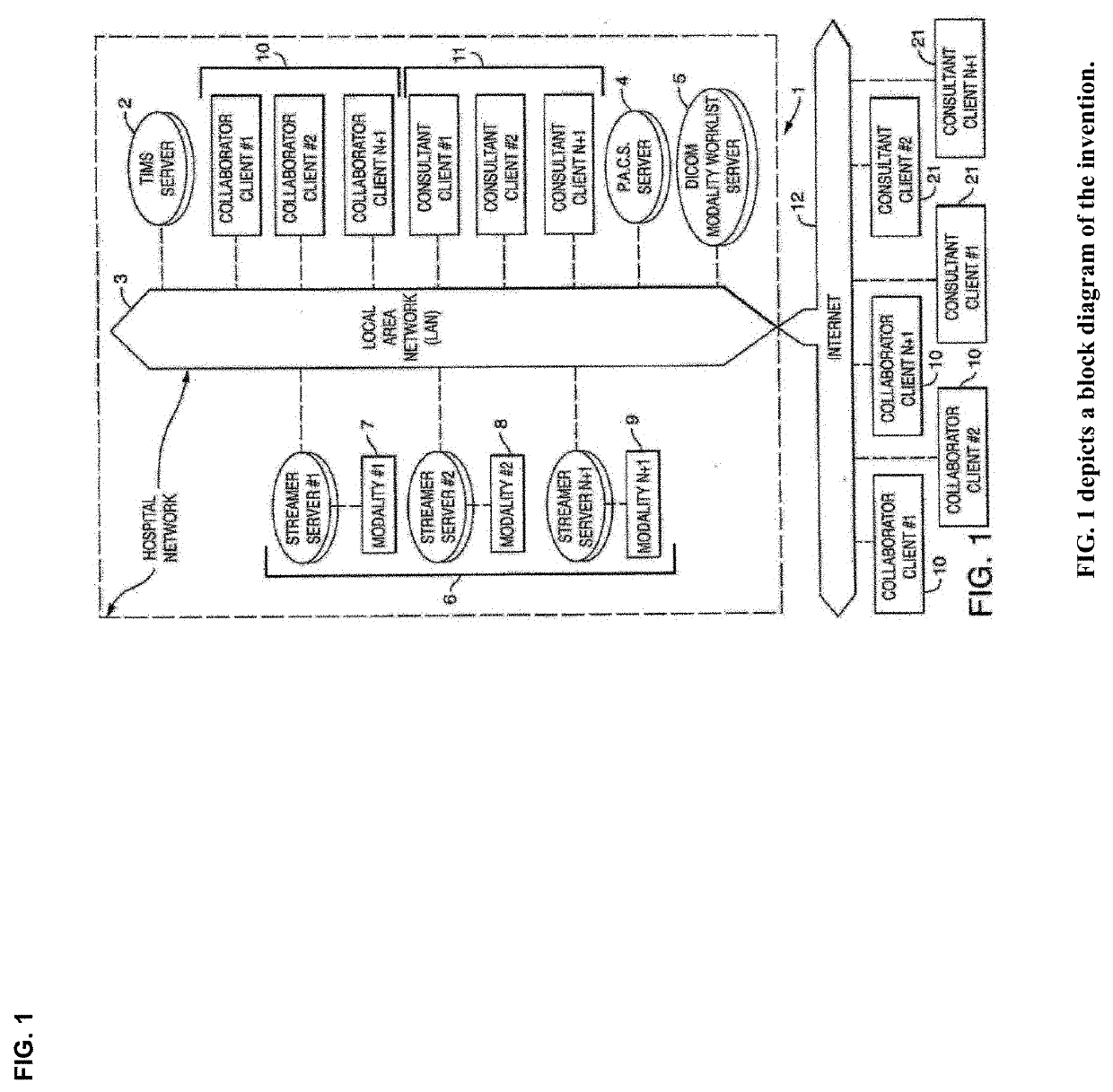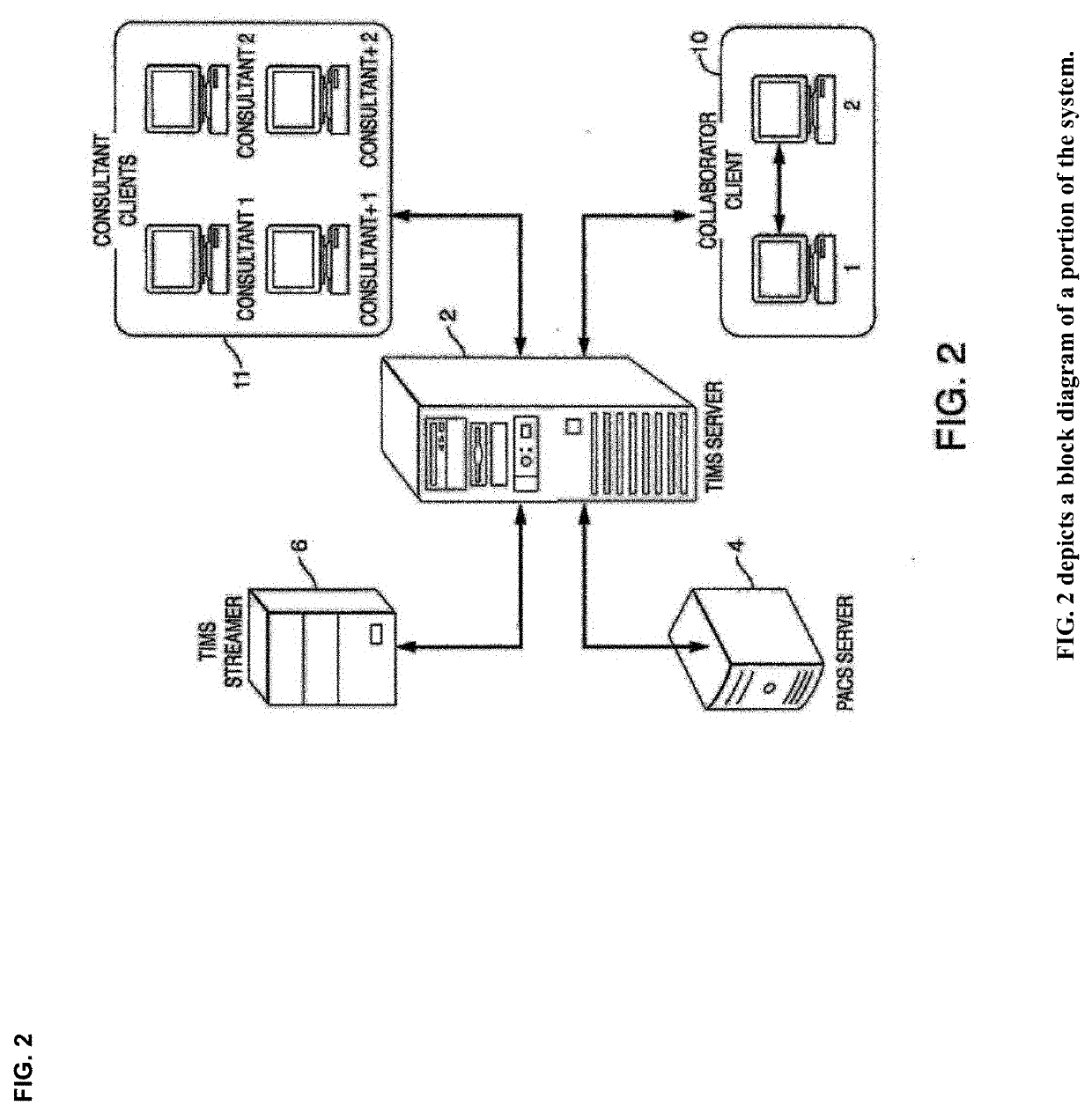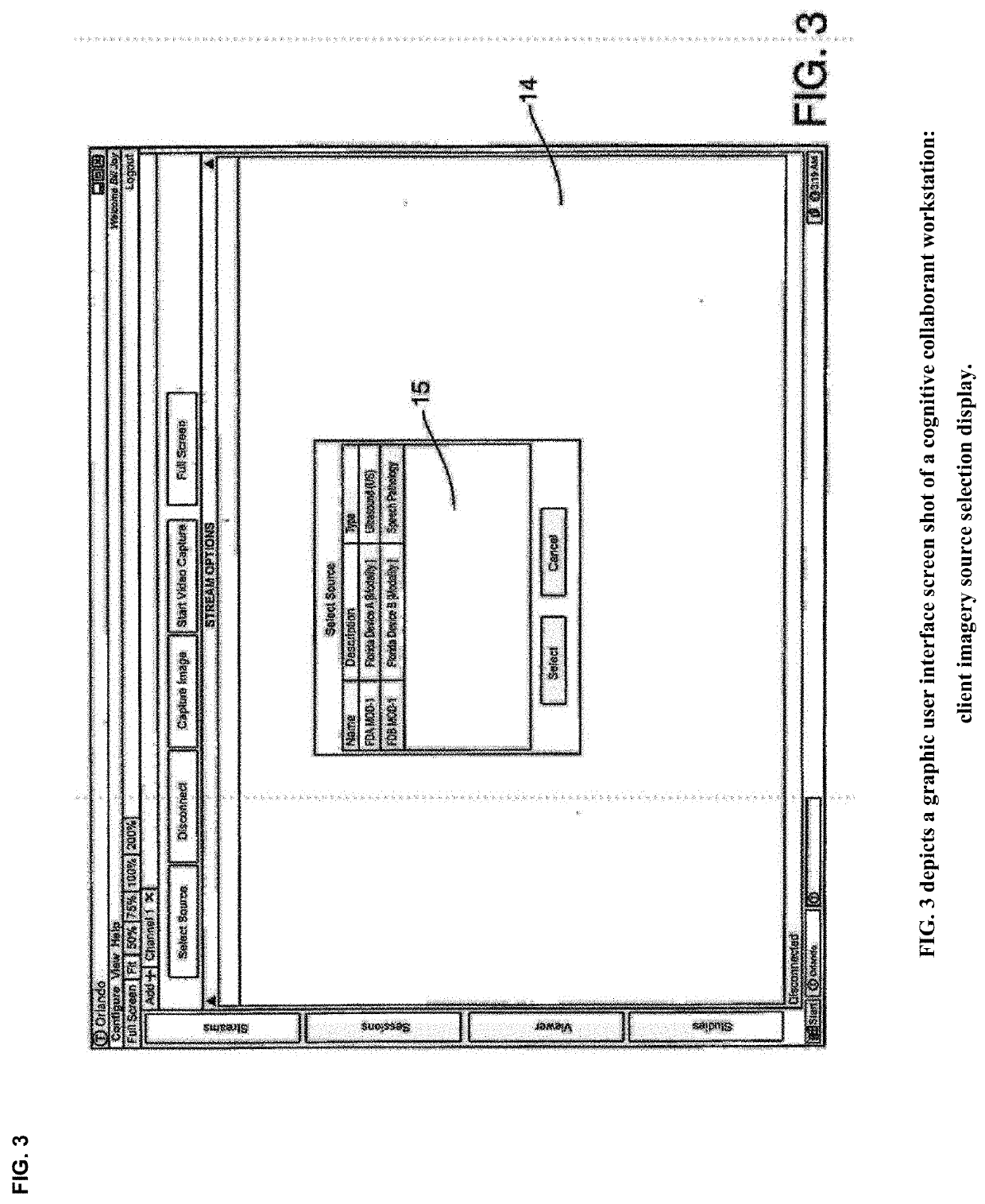Cognitive Collaboration with Neurosynaptic Imaging Networks, Augmented Medical Intelligence and Cybernetic Workflow Streams
a neurosynaptic imaging and cognitive collaboration technology, applied in the field of network systems, can solve the problems of consuming more bandwidth, losing illustration quality or consuming more bandwidth, and frustrating clinicians who are often frustrated by the tedious nature of searching for genotype-phenotype interrelationships among syndromes, etc., to achieve the effect of reducing image latency and wait time, improving operating performance, and reducing image quality and waiting tim
- Summary
- Abstract
- Description
- Claims
- Application Information
AI Technical Summary
Benefits of technology
Problems solved by technology
Method used
Image
Examples
Embodiment Construction
[0178]A network system 1 for allowing users to concurrently communicate live; concurrently collaborate live, concurrently consult live, and concurrently instruct live while concurrently viewing multiple sources of streaming imagery data 13 on a display screen using sketched and annotated participant cognitive collaborant input illustrations over streaming imagery data 13 among a group of remotely located participant cognitive collaborants 10, including heterogeneous networked teams of persons, machines, devices, neural networks, robots and algorithms.
[0179]The network system having at least one or more TIMS Clini-Pod Network Servers (CNS) 2 including associated data bases in communication with local area networks 3, in some circumstances connected to and having access to a medical PACS server 4 including associated database all capable of using the protocols required by the DICOM Standard and all having access to DICOM modality work list utilities for appending imagery metadata 5 in...
PUM
 Login to View More
Login to View More Abstract
Description
Claims
Application Information
 Login to View More
Login to View More - R&D
- Intellectual Property
- Life Sciences
- Materials
- Tech Scout
- Unparalleled Data Quality
- Higher Quality Content
- 60% Fewer Hallucinations
Browse by: Latest US Patents, China's latest patents, Technical Efficacy Thesaurus, Application Domain, Technology Topic, Popular Technical Reports.
© 2025 PatSnap. All rights reserved.Legal|Privacy policy|Modern Slavery Act Transparency Statement|Sitemap|About US| Contact US: help@patsnap.com



